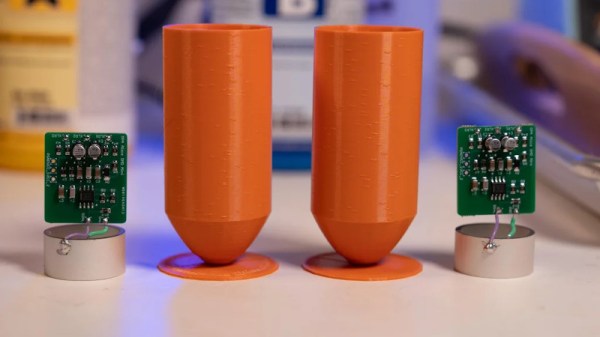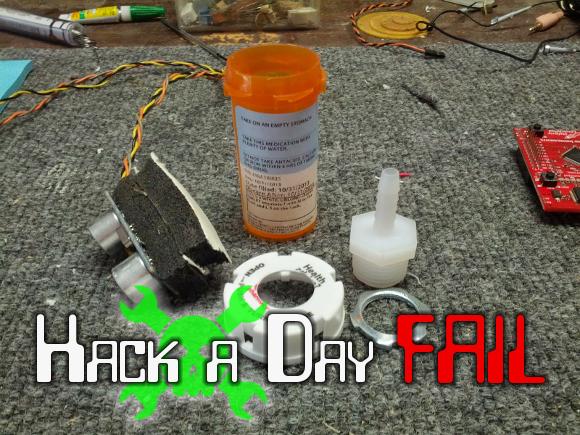It may be hard to believe, but BASIC turned 60 this week. Opinions about the computer language vary, of course, but one thing everyone can agree on is that Professors Kemeny and Kurtz really stretched things with the acronym: “Beginner’s All-Purpose Symbolic Instruction Code” is pretty tortured, after all. BASIC seems to be the one language it’s universally cool to hate, at least in its current incarnations like Visual Basic and VBA. But back in 1964, the idea that you could plunk someone down in front of a terminal, or more likely a teletype, and have them bang out a working “Hello, world!” program with just a few minutes of instruction was pretty revolutionary. Yeah, line numbers and GOTO statements encouraged spaghetti code and engrained bad programming habits, but at least it got people coding. And perhaps most importantly, it served as a “gateway drug” into the culture for a lot of us. Many of us would have chosen other paths in life had it not been for those dopamine hits provided by getting that first BASIC program working. So happy birthday BASIC!
hydrophone5 Articles
DIY Hydrophone Listens In On The Deep For Cheap
The microphone is a pretty ubiquitous piece of technology that we’re all familiar with, but what if you’re not looking to record audio in the air, and instead want to listen in on what’s happening underwater? That’s a job for a hydrophone! Unfortunately, hydrophones aren’t exactly the kind of thing you’re likely to find at the big-box electronics store. Luckily for us, [Jules Ryckebusch] picked up a few tricks in his 20-year career as a Navy submariner, and has documented his process for building a sensitive hydrophone without needing a military budget.
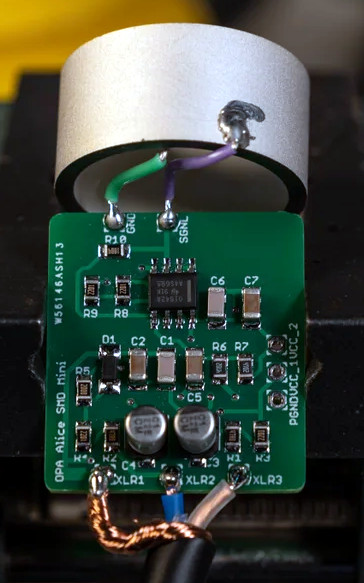 Fascinated by all the incredible sounds he used to hear hanging around the Sonar Shack, [Jules] pored over documents related to hydrophone design from the Navy and the National Oceanic and Atmospheric Administration (NOAA) until he distilled it all down to a surprisingly straightforward build. The key to the whole build is a commercially available cylindrical piezoelectric transducer designed for underwater communication that, incredibly, costs less than $20 USD a pop.
Fascinated by all the incredible sounds he used to hear hanging around the Sonar Shack, [Jules] pored over documents related to hydrophone design from the Navy and the National Oceanic and Atmospheric Administration (NOAA) until he distilled it all down to a surprisingly straightforward build. The key to the whole build is a commercially available cylindrical piezoelectric transducer designed for underwater communication that, incredibly, costs less than $20 USD a pop.
The transducer is connected to an op-amp board of his own design, which has been adapted from his previous work with condenser microphones. [Jules] designed the 29 x 26 mm board to fit neatly within the diameter of the transducer itself. The entire mic and preamp assembly can be cast inside a cylinder of resin. Specifically, he’s found an affordable two-part resin from Smooth-On that has nearly the same specific gravity as seawater. This allows him to encapsulate all the electronics in a way that’s both impervious to water and almost acoustically transparent. A couple of 3D-printed molds later, the hydrophone was ready to cast.
Interestingly, this isn’t the first homebrew hydrophone we’ve seen. But compared to that earlier entry, which basically just waterproofed a standard microphone pickup, we think this more thoughtful approach is likely to have far better performance.
Continue reading “DIY Hydrophone Listens In On The Deep For Cheap”
Fail Of The Week: Sonar Submersibility Sealing
For the last decade or so, [Jason] has wanted to build an underwater robot. Can you blame him? More recently, he’s been researching sonar sensing and experimenting with the relatively inexpensive HC-SR04 module. Since he had good luck getting it to work with a PC sound card and a Stellaris Launchpad, he figured it was time to try using it underwater.
Hydrophone research led him to the idea of submerging the sensor in mineral water oil to both seal it and couple it with the water. Unfortunately, the HC-SR04 only sends one pulse and waits for echo. Through the air, it reliably and repeatedly returned a small value. Once inside a pill bottle filled with mineral oil, though, it does something pretty strange: it fluctuates between sending back a very small value and an enormous value. This behavior has him stumped, so he’s going to go back to the Launchpad unless you can help him figure out what’s going on. Should he use a different method to seal it?
 Fail of the Week is a Hackaday column which runs every Thursday. Help keep the fun rolling by writing about your past failures and sending us a link to the story — or sending in links to fail write ups you find in your Internet travels.
Fail of the Week is a Hackaday column which runs every Thursday. Help keep the fun rolling by writing about your past failures and sending us a link to the story — or sending in links to fail write ups you find in your Internet travels.
Now You Can Record Mermaids Singing
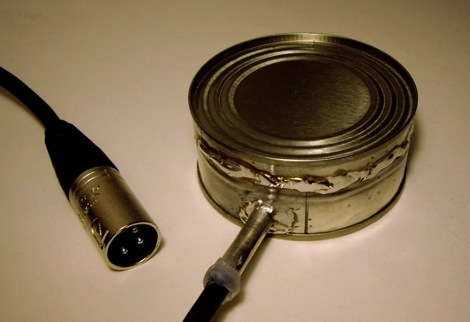
Buy stock in hot glue, this project corners the market on the stuff. [Leafcutter John] uses the hot goop as his water-proofer of choice when building an underwater microphone (also known as a hydrophone). By installing a couple of piezo elements on one lid of a tin can he is able to record some amazingly clear audio. This is aided by a pre-amp inside the metal enclosure. By cleaning off the clear coating from the inside of these steel can parts, he was able to solder the seams to keep the water out. In the end, coins are added for ballast and any remaining space is completely filled with hot glue.
He’s got a handful of example recordings on his project page. Here’s an what a running faucet sounds like from under water:
Hydrophone
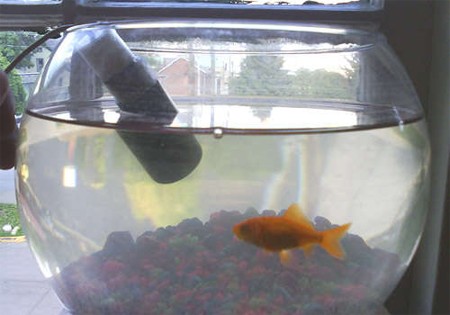
Chances are you’ve never wondered what your goldfish is trying to say, but if you have (or if you just want a project), check out this DIY hydrophone.
You will need a computer microphone, vegetable oil, plastic wrap, scissors, solder, and a small unused plastic bottle. Solder the mic capsule to an appropriate length of cable and test. The entire assembly can then be submerged in vegetable oil inside a plastic bottle. Yes, vegetable oil. Seal the bottle and you’re done.


